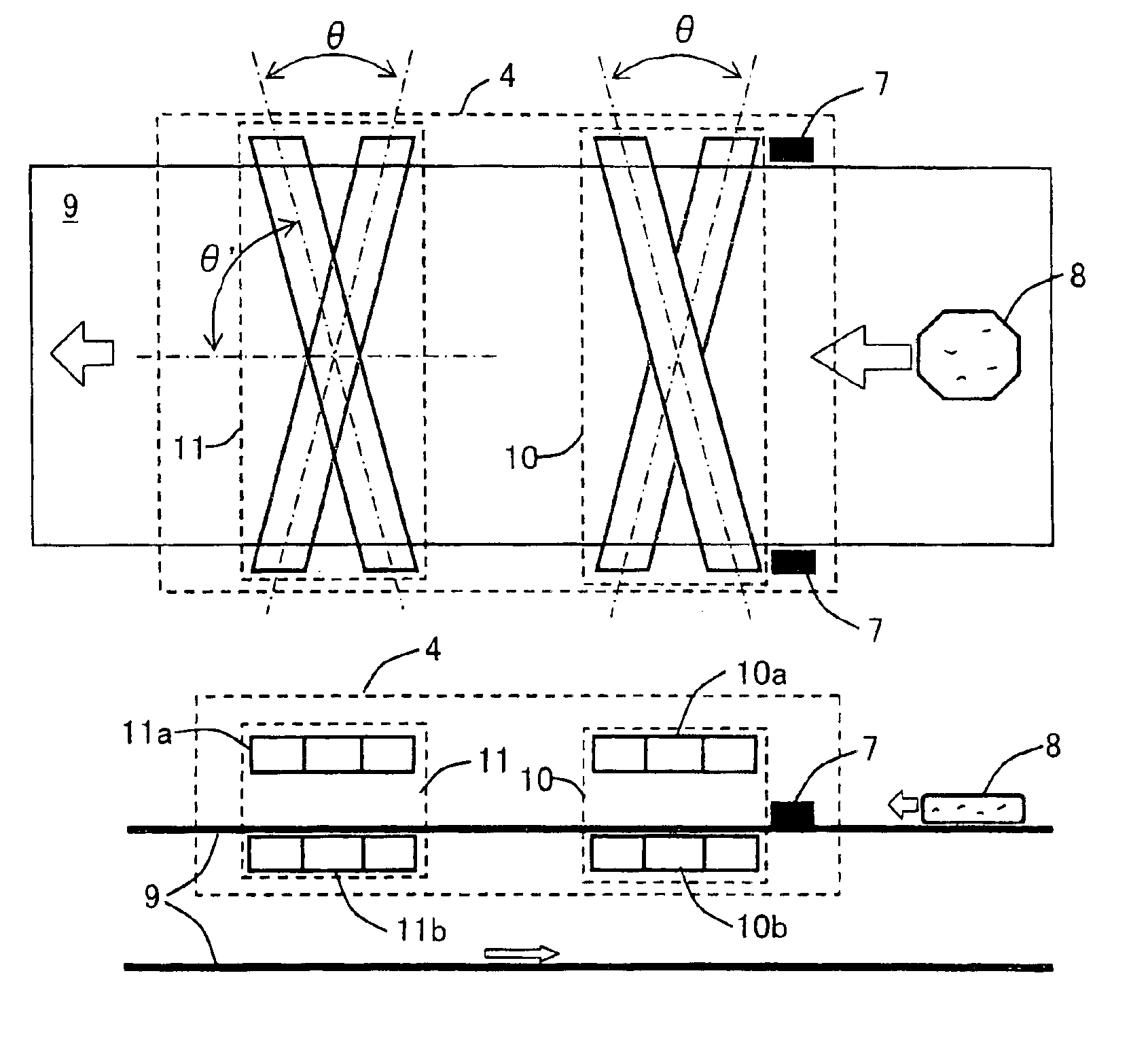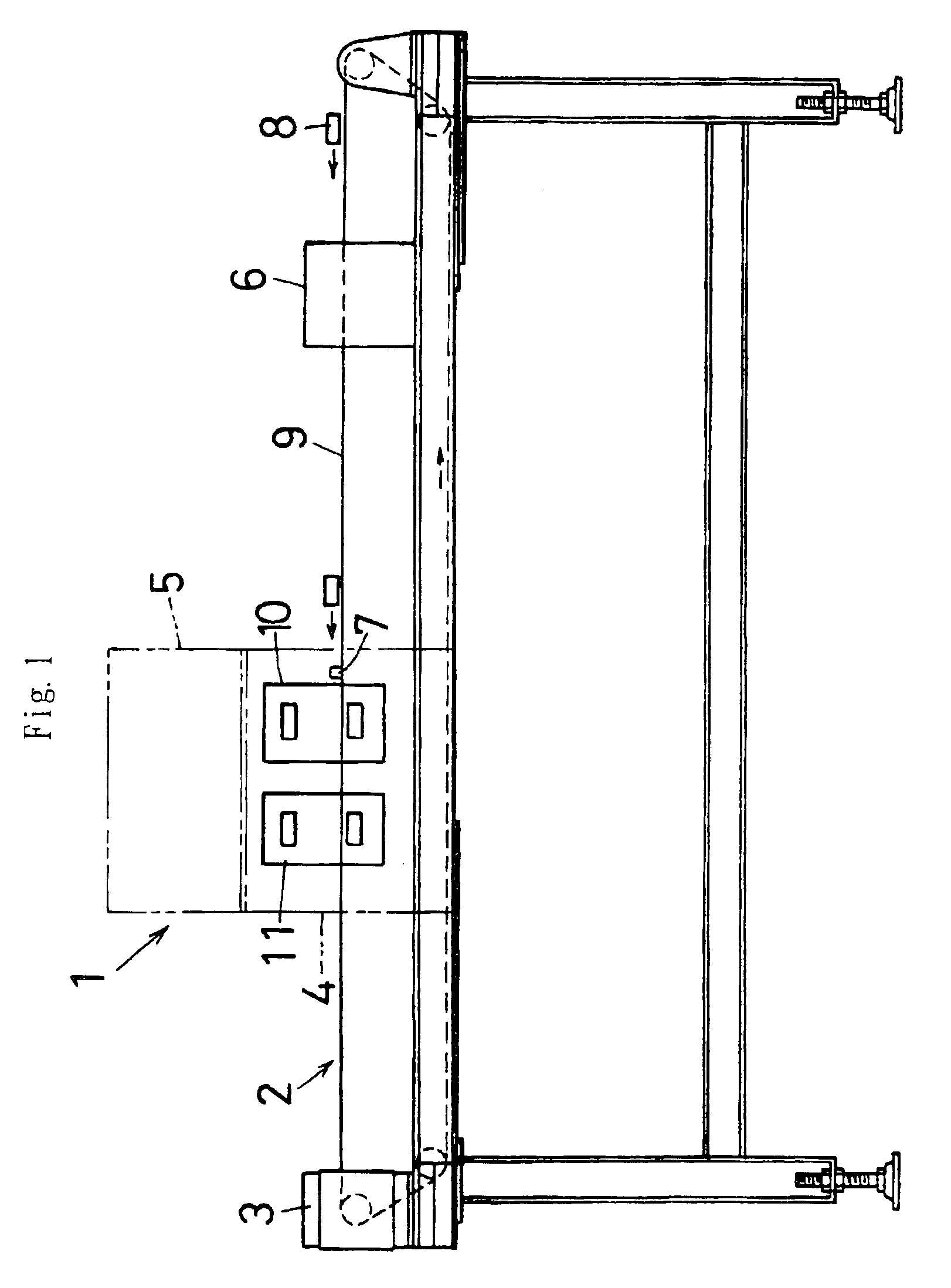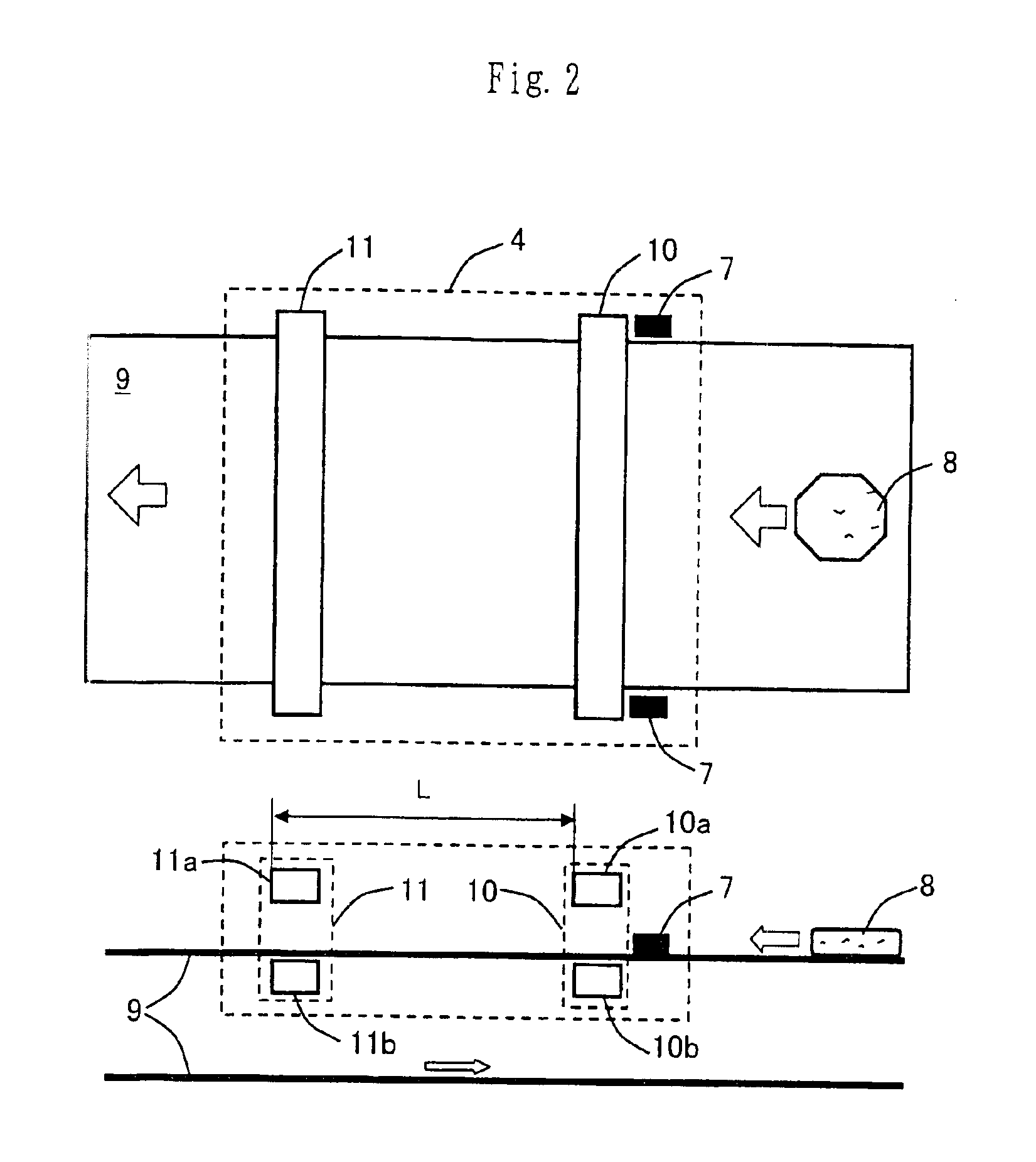Method for detecting metallic foreign matter and system for detecting metallic foreign matter
a technology for foreign matter and detection methods, applied in the direction of magnetic variables, instruments, and using reradiation, can solve the problems of affecting the reception sensitivity, contaminant such as metal fragments may get mixed in the products, and it is impossible to avoid wear particles or fragments of such stainless steel products from getting mixed in food products,
- Summary
- Abstract
- Description
- Claims
- Application Information
AI Technical Summary
Benefits of technology
Problems solved by technology
Method used
Image
Examples
embodiment 1
[Embodiment 1 of the Invention]
(Structure of Metallic Contaminant Detecting Apparatus)
[0089]FIG. 1 shows schematically a metallic contaminant detecting apparatus 1. The metallic contaminant detecting apparatus 1 is adapted to detect a metallic contaminant in an object under inspection, particularly a metallic contaminant mixed in a food product in an aluminum packaging bag, which is a container for wrapping a food product, and to give notice of the detected fact. The metallic contaminant detecting apparatus 1 comprises a belt conveyor 2, a motor 3 for driving, a sensor storage part 4, a control part 5, a magnet booster 6, and so forth. The belt conveyor 2 is a belt conveyor device mounted on a legged frame and adapted to convey an object 8 under inspection at a predetermined speed.
[0090]The belt conveyor 2 has an endless belt 9 that is driven to rotate by a driving motor 3 provided at one end of the belt conveyor 2. An object 8 under inspection is conveyed on the belt 9. In the conv...
embodiment 2
[Embodiment 2] (Crossed Arrangement of Sensor Coils)
[0118]FIG. 7 is a diagram showing an embodiment in which the sensor coils are disposed to cross each other. The embodiment 2 is basically the same as the above-described embodiment 1. Only a part in which the embodiment 2 differs from the embodiment 1 will be described below. A detailed description of the same portions as those of the embodiment 1 is omitted. In the embodiment 2, the sensor coils are disposed to cross each other.
[0119]More specifically, the sensor coil 10a and the sensor coil 10b, which constitute the first sensor coil, are disposed to cross each other at a predetermined angle θ (as seen from above). The sensor coils 10a and 10b are disposed to extend horizontally in parallel to the belt 9. The sensor coils 10a and 10b intersect the conveying direction of the belt 9 at an angle of (π−θ) / 2 (=θ′) and an angle of (π+θ) / 2 (=θ′+θ), respectively (see FIG. 7). It should be noted that the arrangement of the sensor coils 10...
embodiment 3
[Embodiment 3] (Arrangement of Magnet Booster)
[0122]The embodiment 3 is basically the same as the embodiment 1 or 2. Only a part in which the embodiment 3 differs from the embodiment 1 or 2 will be described below. A detailed description of the same portions as those of the embodiment 1 or 2 is omitted. FIG. 8 is a diagram showing the arrangement of the magnet booster 6. The magnet booster 6 comprises a magnet element 6a and a magnet element 6b. The magnet elements 6a and 6b are installed facing each other vertically across the belt 9. The magnet elements 6a and 6b are disposed such that their like magnetic poles N face toward the belt 9. The magnet booster 6 is arranged so that an inspection object 8 passes between the magnet element 6a and the magnet element 6b.
[0123]It should be noted that each of the magnet elements 6a and 6b may comprise a plurality of magnet elements. Further, the magnet elements 6a and 6b may be arranged or installed in any form, provided that the magnet ele...
PUM
| Property | Measurement | Unit |
|---|---|---|
| frequency | aaaaa | aaaaa |
| diameter | aaaaa | aaaaa |
| diameter | aaaaa | aaaaa |
Abstract
Description
Claims
Application Information
 Login to View More
Login to View More - R&D
- Intellectual Property
- Life Sciences
- Materials
- Tech Scout
- Unparalleled Data Quality
- Higher Quality Content
- 60% Fewer Hallucinations
Browse by: Latest US Patents, China's latest patents, Technical Efficacy Thesaurus, Application Domain, Technology Topic, Popular Technical Reports.
© 2025 PatSnap. All rights reserved.Legal|Privacy policy|Modern Slavery Act Transparency Statement|Sitemap|About US| Contact US: help@patsnap.com



